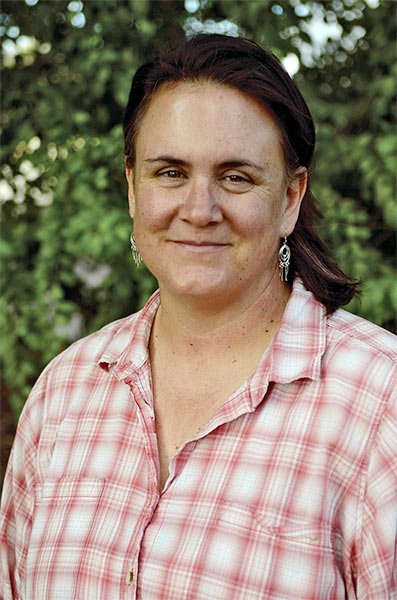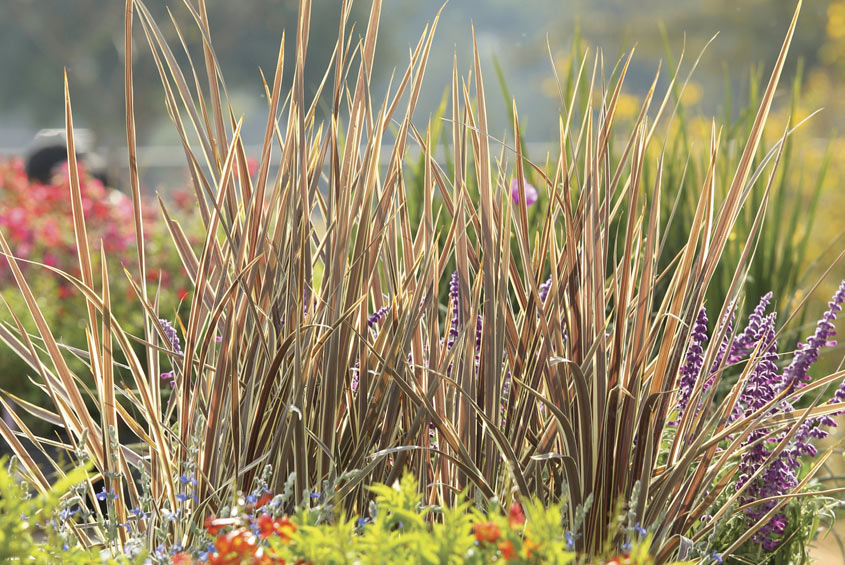Expert Q&A: Gardening
Planting a Sustainable, Drought-tolerant Garden
by Geoff Thurner

FresnoState Magazine sat down with Calliope Correia, a Fresno State instructional support technician with 15 years of experience in water-wise gardening, to learn some of her best tips. Planting a drought-tolerant landscape or garden doesn’t mean people only have to plant cactus.
FresnoState Magazine: How can we be sustainable in our home landscapes?
Calliope Correia: Healthy soil grows healthy plants. New plants like a mix of native soil and organic matter like compost or a soil amendment. When planting, make sure you break up the hard pan below to encourage good drainage and healthier roots. Blending in organic matter at least once or twice a year, especially with vegetable gardens, grows strong plants that can resist insects and disease and rely less on synthetic fertilizers and pesticides. Also, try to use low-rate, slow-release, naturally-sourced fertilizers. Having a mixture of plants that flower at different times is aesthetically pleasing and provides an environment for beneficial wildlife and insects that encourage pollination. Nature has a design to keep the “bad” bugs in check with good bugs, and a mix of different plants helps keep disease at bay.
FS Mag: What are other good water-wise landscaping principles?
CC: Before you plant, come up with an overall design that provides diversity in plant appearance, heights and flowering schedules but with similar water and light requirements. It’s similar to prepping a house for painting. A bulk of the work that you put in before actually starting the project makes it look beautiful in the end. Installing a good irrigation system is crucial for success.
FS Mag: What are tips on conserving water while keeping plants healthy?
CC: It’s important to have a mulch like wood chips or gravel on top of exposed soil to prevent water evaporation. Use a drip irrigation system, especially in vegetable gardens, so you’re only watering the plant itself. Always aim for planting drought-tolerant species but know that it will take a year or so before they establish their root systems and can withstand periods of drought.
FS Mag: What types of plants do you suggest for landscaping?
CC: When visiting nurseries, try to choose plants that have been grown locally. Independent local nurseries usually have staff who are happy to talk about the large variety of plants that will thrive with reduced water and are attractive like Salvias, Cistus, Vitex, Ceanothus, Lantana and certain grasses. You can get ideas from public demonstration gardens and neighbors’ landscapes, especially in different seasons. Take pictures of them with you to the nursery.
— Geoff Thurner is a communications specialist for the Jordan College of Agricultural Sciences and Technology at Fresno State.






